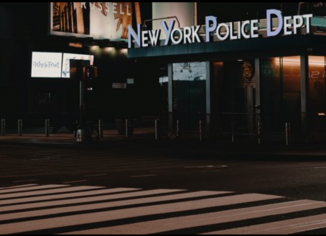
All you have to do is visit Times Square in New York City, Piccadilly Circus in London, or Shibuya Crossing in Tokyo, and the empty streets tell the story. What once were crowded, brightly lit by huge electronic billboards, public squares, have become something out of a post-apocalyptic science fiction movie. If there is no one there to see the ads, it’s like a tree that falls in the woods.
Busses still run, with their sides covered in art for the latest movie or fashionable product, but those ads suffer the same fate. If there is no one to see them, what good are they? Same with transit stops, signage in shop windows, taxi toppers, and more.
It’s clear the virus has pushed the global economy down, and with fewer dollars to spend in general, advertisers must pick their battles, and what was once a staple for the industry, is now “not essential.”
Every ad dollar in the United States last year led to $9 in sales, according to the research firm IHS Markit. But when those ad dollars dry up, the outlets that execute and display them go out like lights. From the ad agencies to the sign companies, to the TV stations, radio stations, newspapers, and magazines… a ripple effect hits the businesses and hundreds of thousands of people are affected, everyone suffers.
The companies that want to sell their products with the help of messaging, must re-think their strategies.
How Brands Should Message
Now before we discuss the media buys that work in this new world, we should first talk about how brands should be positioning themselves, and how they can be sensitive to their consumers during these hard times.
In the current climate, brands should center their messaging around the following three topics:
- Care for Customers
- Care for Employees
- Care for Community
The world was already shifting towards ethics-based marketing, and the Coronavirus pandemic has only pushed it further in that direction. Once all of this passes, customers won’t remember your taglines or your video editing. They’re going to remember what you stood for and what you did.
For this reason, if you’re going to share messaging, try to think about what your customer needs before focusing on the message you want to send. They aren’t looking for regular marketing right now, they want a distraction, useful deals, information, guidance, and support.
While your brand might not be positioned to handle all of these things, think about what you can do and start there. When you put the customer first, they won’t soon forget it.
The next step is to make sure customers know that you’re taking care of your employees. Are you giving them ample sick leave? Are they still getting paid? Are lay-offs or furloughs happening? These are uncertain times, and customers are paying attention.
While certain negative side effects may be unavoidable, be open and honest with your customers about how you’re protecting your employees. We’re all unsure of what the future holds, but knowing our favorite brands are doing whatever they can to protect their employees makes it easier to purchase from that brand in the future.
Some CEOs are cutting their own salaries to provide for employees, some are applying for government support, and others are offering paid leave to all employees, even hourly to help keep their people safe and happy. Audiences will remember this, and they will base their purchasing decisions on this in the future.
Finally, brands should be thinking about what they can do for their local communities. The world is coming together right now, and everyone can play a part. Some companies are donating money to hospitals, others are shifting production lines to create needed supplies like masks and hand sanitizer. Still others, like streaming services and video conferencing services, are offering extended free trials and special deals to help our society through this crisis.
Once you’ve settled on what you can do and who you can do it for, you’re able to finally spread that message to your audience. But with streets empty, where can you share your message?
Where to Market
There are still some traditional ad buys that accomplish the holy grail of “reach and frequency.”
TV is still a good, if expensive, buy, but with fewer cars in the road, radio has taken a hit.
Newspapers are seeing some upswing, so that can be a measured purchase for media spend. But the magazine industry has also taken a hit, so those high priced, glossy pages may not be as effective.
There are still some tried and true methods out there to reach a large targeted audience.
Direct mailing and email blasts can cover a huge swath of people. Programmatic buying can target an audience on lots of different media without costing as much as a general market buy. Targeted video online, when done right (think the first 3 seconds), can be one solution on outlets like Youtube. Content placed on social media, like Tik Tok, Instagram, Facebook, and Twitter are also an answer. So to are ads on free apps, and rich media on websites.
And a big swing at the ad game is being taken by AVODs (Advertising Based Video On Demand, there are plenty to choose from).
Live event marketing has taken a mortal blow now, but virtual events are an interesting thing to investigate as an ad medium.
But I think now more than ever, the industry needs to be looking at newer, more unusual ways to get their messages out there.
Be innovative and think differently.
One way is to harness the ever-growing number of voice assistants, like Alexa and Google. Their penetration in the US is staggering. According to eMarketer, it’s estimated that 111.8 million people in the US will use a voice assistant at least monthly this year. That represents 39.4% of US internet users and 33.8% of the overall population. If that’s not a place to do business, I don’t know what is.
Another (and not so new) method is in-game ads integrated into the mobile or desktop as product placements. They can be banners on billboards, screens, or 3D products, that users can interact with (what is new is VR gaming). But if you’re looking for retention of the message, these haven’t been proven to be the best bets yet, but they could be a creative part of an overall strategy to extend your brand if that’s the target audience you’re after.
And speaking of product placement, it’s not just seeing your actual product in a film or show, but now there is virtual product placement. That empty table may now hold a box of cereal or a can of soda that wasn’t there when the shoot was finished.
The point is, it’s time to get creative, and isn’t that what advertising is all about?
Don Draper didn’t have the tools we have today.
All it takes is a new way of thinking. I can’t wait to see what we come up with.